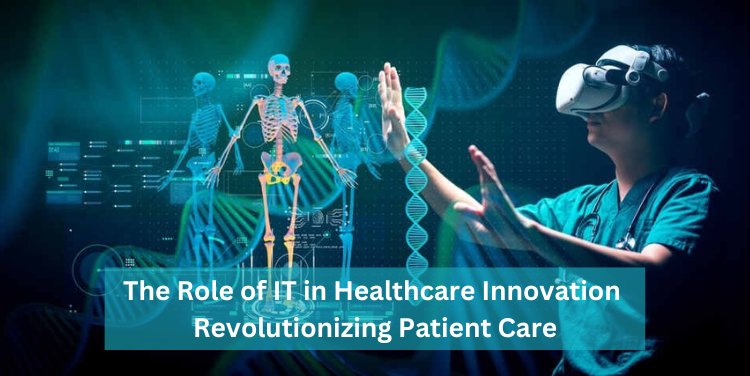The Role of IT in Healthcare Innovation: Revolutionizing Patient Care

In today's rapidly evolving healthcare landscape, Information Technology (IT) plays a pivotal role in driving innovation and transforming patient care delivery. From electronic health records (EHR) to telemedicine, IT solutions are revolutionizing how healthcare is administered, improving accessibility, efficiency, and quality of care.
Electronic Health Records (EHR):
EHR systems have replaced traditional paper-based records, streamlining patient information management. They enable healthcare providers to access patient data instantly, facilitating better coordination of care among different providers and reducing medical errors.
Telemedicine:
Telemedicine utilizes IT to deliver healthcare remotely, allowing patients to consult with healthcare providers via video conferencing, phone calls, or secure messaging platforms. This approach enhances access to care, especially for individuals in rural or underserved areas, and reduces the need for in-person visits, saving time and resources for both patients and providers.
Health Information Exchange (HIE):
HIE platforms enable the secure sharing of patient information across different healthcare organizations and systems. This interoperability enhances care coordination, reduces duplicate testing, and ensures that healthcare providers have access to comprehensive patient data, leading to more informed decision-making.
Remote Patient Monitoring (RPM):
RPM utilizes IT tools to monitor patients' health status remotely, often through wearable devices or mobile apps. By continuously collecting and analyzing patient data, healthcare providers can detect early warning signs, manage chronic conditions more effectively, and intervene proactively to prevent complications.
Healthcare Analytics:
Advanced analytics tools leverage IT to analyze large volumes of healthcare data, uncovering insights that can drive improvements in patient outcomes, operational efficiency, and cost-effectiveness. Predictive analytics, for example, can help identify high-risk patients who may benefit from targeted interventions, while population health management tools enable healthcare organizations to address the health needs of specific patient populations.
Artificial Intelligence (AI) and Machine Learning:
AI and machine learning algorithms are being increasingly integrated into healthcare IT systems to automate repetitive tasks, enhance diagnostic accuracy, and personalize treatment plans. These technologies have the potential to revolutionize healthcare delivery by enabling more precise diagnoses, predicting patient outcomes, and optimizing resource allocation.
IT is a catalyst for healthcare innovation, driving improvements in patient care, operational efficiency, and population health management. By harnessing the power of technology, healthcare organizations can overcome many of the challenges facing the industry and deliver more accessible, cost-effective, and patient-centered care.
What's Your Reaction?















